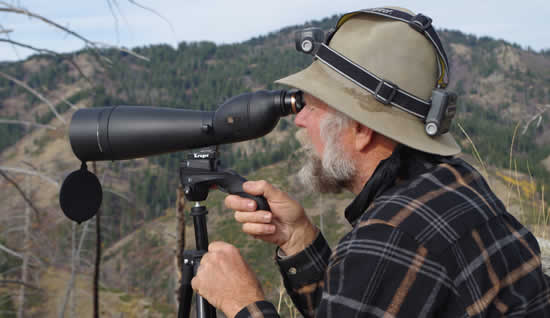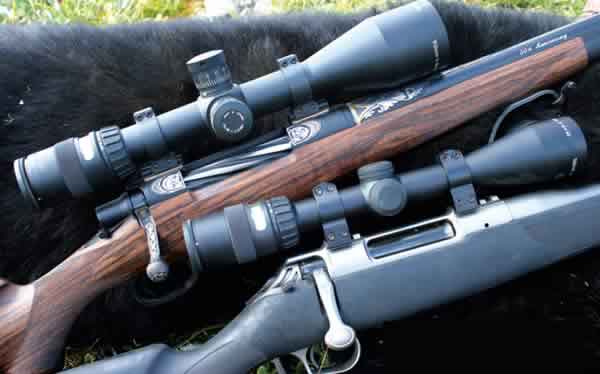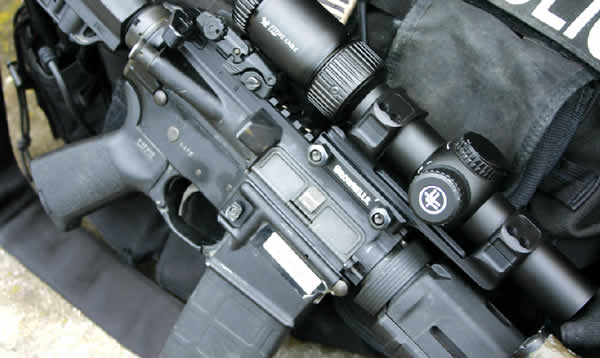
Scoping out Athlon Optics
A relative newcomer to the hunting and shooting market, this Kansas-based company has plenty of scope options with innovative, rugged features for topping all kinds of rifles, plus a strong warranty.
STORY BY JIM DICKSON • PHOTOS BY ATHLON OPTICSAthlon Optics is a relatively new manufacturer of rifle scopes that has a lot to offer today’s shooters. The Kansas-based company, which opened its doors in 2014, has as fine a warranty as you could ask for: a lifetime warranty on the scope itself, regardless of whether you are the original purchaser or not.

They mean it, too. One man had a scope fall out of a saddle scabbard and got ruined. Another had a spotting scope he was using fall over the edge of a mountain and crack its lens. Both were repaired or replaced without question at no charge, despite the fact that no scope is going to take falling down a mountain and landing on rocks.

These are rugged scopes made of one piece of aircraft aluminum that has been annealed to remove any stresses that could cause it to warp. They are argon purged so they will never fog, and they are waterproof to a depth of 1 meter for one hour, so you don’t have to worry about the rain getting in them.
All scopes can be purchased with the option of an illuminated reticle. This is vitally important at dawn and dusk when game is moving about and having enough light to see your crosshairs is an issue. Athlon has two very useful and unique reticle designs. One features an illuminated horseshoe over the crosshairs for fast target acquisition and the other is a triangular reticle similar to the old iron inverted V front sight. They refer to this as a Christmas tree reticle.
DEAD FOOT ARMS

Athlon scopes have a large adjustment range of 85-110 MOA or 22 mil-32 mil range adjustment. There is a left side objective focus for parallax that can be adjusted down to 10 yards. This is very important for those using these scopes in airgun or .22 matches because most scopes adjust parallax down to only 50 yards.


Various reticle styles are available for different scopes, including illuminated half circle and “Christmas tree” designs.


These are second focal plane scopes, where the reticle is mounted behind the magnification. This is no handicap except when using mil-dots, as the reticle will change size at different magnification, disrupting the accuracy of the mil-dots. For all other uses it poses no problems. The entry-level first focal plane scope is the Talos BTR 4-14X at $299. This is a fine scope for those who want a mil-dot reticle.

Now we come to the premium scopes: the Argos BTR Gen 2 6-20X and 8-24X priced at $399 to $429; the Helos BTR 6-24X and 8-34X priced at $399 to $599; the Midas TAC 4-16X and 6-24X and 5-25X priced at $529 to $669; the Midas BTR Gen 2 2.5-15X and 4.5-27X priced at $529 to $589; the Ares BTR Gen 2 2.5-15X and 4.5-27X priced at $799 to $849; the Ares ETR 4.5-30X priced at $1,199; and the 4.5-29X Cronus BTR priced at $1,799.
These are all first focal plane scopes with the reticle in front of the magnification, so if you are using a reticle with mil-dots, they stay accurate at all magnification powers.

These scopes are all rated for 1000 G recoil, or .50-caliber Browning Machinegun round rated. That’s not that common with scopes. These have a wide band coating on the lenses for maximum light transmission, as well as a special hard coating for scratch protection that is also hydrophobic so that rain will not prevent you from seeing through your scope.

This can be a big issue in rain-sodden areas like parts of Alaska where iron sights have traditionally been preferred over scopes because it always seems to be raining. While everyone knows that a lens tissue is what you are supposed to use to clean lenses, in the real world you don’t always have lens tissue when you have to clean the lens. The coatings on these scopes protect you when Kleenex or cloth must be used. The Midas and Ares lines have stainless steel turrets, which are more durable than aluminum and give a more audible click.
AN IMPORTANT FEATURE of these scopes for .50-caliber BMG and .338 Lapua shooters is that they come back to zero at 100 yards perfectly after moving the zero to 250, 500, 750 and 1,000 yards. The same number of clicks will bring them back to 100-yard zero. Not all scopes will do this.

There is also the True Precision Zero Stop. Once set at 100 yards zero, take out the turret knob and set the zero stop locking plate. Now put the turret knob back with the zero mark centered. You can now dial up and dial back down until it stops and you will be on target again at 100 yards. You don’t have to count clicks or remember how many you dialed up. Under the stress and fatigue of combat or hunting, this is a very big thing.

An exception is the Helos BTR. When you push the knob in, it locks in place. Pull it out to unlock it and adjust. This prevents any bumps or scrapes changing things without your knowledge.
While a newcomer to the riflescope manufacturing field, I believe that Athlon Optics will soon be a major player, as it offers innovative features and high quality at low prices. Editor’s note: For more information, visit athlonoptics.com.






